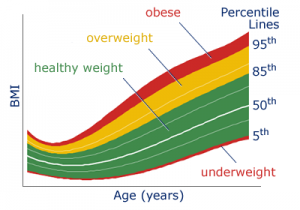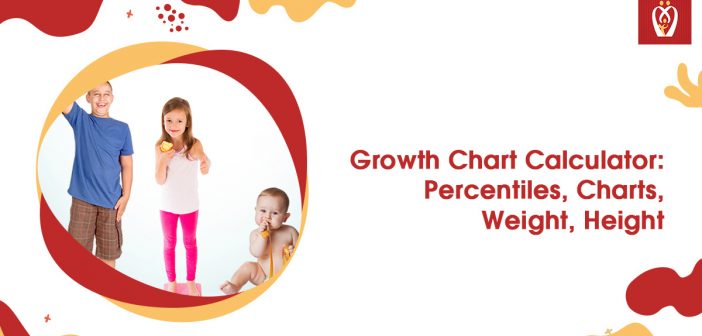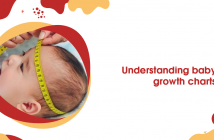A parent’s primary concern is always the development of their child. But, above all, we must remember that growth is multifaceted and not limited to physical change. Nonetheless, physical growth is important, and in this article, we will learn how to assess your baby’s or child’s development more precisely. With the baby growth chart UK and weight percentile calculator, you can easily see how your newborn, infant, or older child’s height, weight, and head circumference develop.
Growth Chart Calculator for Baby, Infants & older Kids (0-20 years)
With the baby growth chart calculator, you can calculate the weight, height, head circumference, and body mass index percentile for newborns, infants, babies, and older boys and girls ranging in age from birth to 20.
How to use the baby growth chart calculator?
The baby growth chart calculator is a simple tool where you enter your child’s birthday, height, gender, weight (in pounds or kilograms), and head circumference. Once the data has been entered, the calculator interprets the values using the WHO’s various growth charts. All the charts interpret in the same way.

How should a child or baby growth chart be read?
Every baby develops at a different rate. Therefore, pediatricians recommend that your child’s values fall within the 50th height or weight percentile, which is the average. However, values below or above the 50th percentile do not indicate that your child’s height or weight is abnormal. In general, if your child is in the upper percentiles, they have larger measurements than the average, and vice versa for the lower percentiles.
Instead of analyzing the actual measurements, you must focus on each measurement’s pattern and the upward growth trend, which indicates that your child is growing steadily.
How can I tell if my baby is developing normally?
We can use numerical parameters such as a child’s height, weight, and head circumference to determine whether or not they are physically growing well. However, baby growth charts and percentile calculators (which incorporate growth charts) are used even by health care professionals because these should not be evaluated as a single parameter.
On the other hand, growth can be measured by how well an infant meets a set of developmental milestones for their age. Although some tools can help us assess the growth of our baby boy or baby girl, it is wise to talk to a health professional who can determine whether our child is growing at a normal rate.
How regularly should I have my baby weighed or measured?
The following is a general guideline for weighing or measuring your child:
- 2 weeks to 6 months – once a month
- 6 months to 12 months – every 2 months
- 12 months to 2 years old – every 3 months
- 2 to 4 years old – once every 6 months
- 5 years and up – once a year
This information is only a guideline. Your pediatrician can tell you how frequently you should measure your newborn, baby, or teen based on the circumstances.

What are growth phases?
Growth phases are the ages at which children physically grow the most. It is the stage at which full height and weight are achieved, as well as an increase in organ size.
- It is considered rapid growth from birth to age 2, though the growth rate slows over time. All growth parameters should be checked using the baby boy growth chart and baby girl growth chart at this age.
- Growth occurs in constant yearly increments from the age of two to the onset of puberty.
- A second growth spurt occurs during puberty, which affects boys and girls differently. The body grows faster during puberty than at any other time, and it is possible to gain or lose weight quickly and grow in heights seemingly overnight.
Why is my baby’s growth rate lower than the average 50th percentile on the baby growth chart?
Many factors influence babies’ overall “size,” causing them to fall below or above the 50th percentile. Parents may be more concerned about children who fall below the 50th percentile. Here are a few reasons your baby might be below the 50th percentile on the baby growth chart.
Genetics: If one or both parents are slim or were slim as children, the child may be small.
Baby’s sensitive periods: When they are learning a new skill, their growth values may fall into the lower percentiles.
Prematurity: Premature babies have lower birth weights at birth and may have lower growth percentiles later in life.
Other more serious issues: Inadequate nutrition, reflux, indigestion, malabsorption, and growth hormone deficiency. However, babies who fall below the 50th percentile may be perfectly normal; your pediatrician should conduct a detailed examination to prevent serious causes.
Nutrition and Growth
Although nutrition is important for children’s physical development, the question is: how much is enough? Because each child has different nutritional needs, the best predictor of adequate nutrition is a child’s steady, consistent growth, as seen on the baby growth chart calculator at appropriate times. However, children who receive good nutrition are generally contented and not always cranky; active and not always tired; healthy and not sickly; and able to meet developmental milestones appropriate for their age.
The Bottom Line
Children develop at different rates. You may use baby growth charts/growth percentile calculators to get a general overview of a child’s size compared to the general population for a more accurate evaluation. However, it is only a guide and can be influenced by various factors, including their genes, activity, current developmental stage, nutrition, and any underlying medical condition. Always pursue professional advice from a health care provider or pediatrician when in doubt. Using the Nurturey pregnancy app, you can schedule an appointment with your child’s pediatrician.
Nurturey PinkBook is the way to go if you need the NHS growth chart. The PinkBook from Nurturey is a “digital substitute” for the NHS’s Red Book. Pregnant women and parents can use the PinkBook to access their child’s health records, view upcoming health checkups, and get trusted information about their stage in the parenting or pregnancy journey from the NHS. Using the Nurturey pregnancy app, you can immediately make an appointment with your healthcare provider or child’s pediatrician. You can also schedule appointments, refill prescriptions, and communicate with them.







